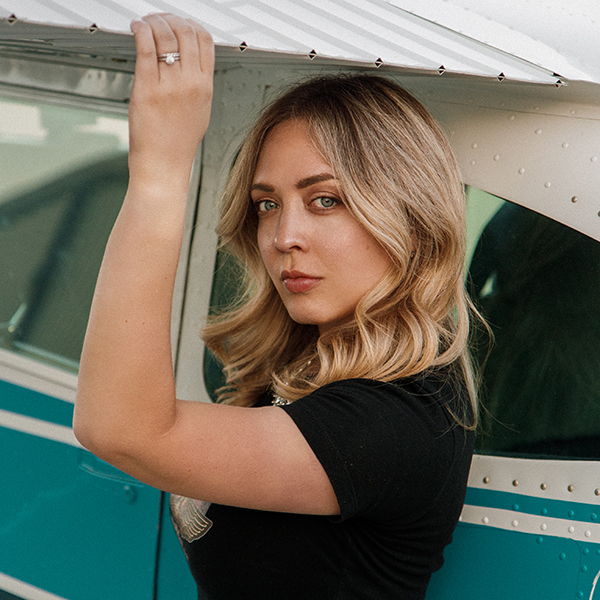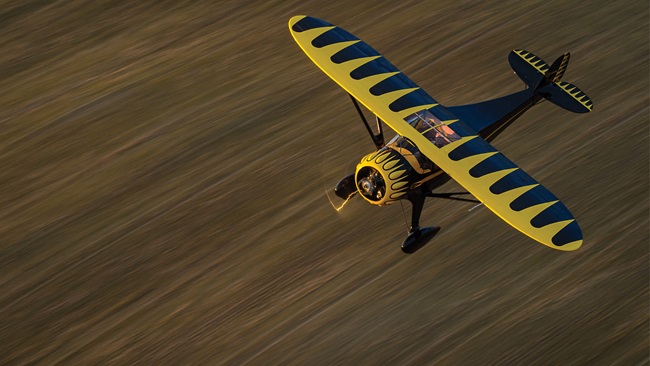Where there's a will there's a way...for wings
Growing up around air force bases in India, Ashwini "Ash" Ahuja once dreamed of following in his father's footsteps and becoming a fighter pilot or a test pilot, but after becoming paralyzed at the age of 11, that dream changed. A sport pilot since 2013, Ahuja recently completed his first coast-to-coast flight—and hopes to inspire other aspiring pilots who use wheelchairs to take to the skies.
Ahuja recalled his search to find a flight school equipped and willing to train him. He found that combo at Philly Sport Pilot in New Jersey. The school, owned by wheelchair-using pilot Sean O’Donnell, operates a Sky Arrow 600, a tandem two-seat, Italian light sport aircraft, with a pusher propeller, and hand controls built-in by the factory.
Ahuja earned his sport certificate in just three months.
For a time, Ahuja, who’s now based at the San Martin Airport in California, flew his friend Paul Tanks' Sky Arrow 600 with hand controls. However, when Tanks decided to relocate in 2020, Ahuja realized it was time to start shopping for an aircraft of his own.
Although Ahuja loves flying the Sky Arrow, it didn’t meet one of his basic requirements. “It’s so small you can’t carry the wheelchair in it,” Ahuja said. “I was looking for a plane that had a large enough baggage area that I could actually put my wheelchair in and go places.”
After speaking with more than six different aircraft manufacturers in the United States and abroad and hearing from fellow pilots, Ahuja set his sights on a Brazilian-built Paradise P1, a two-seat, light sport aircraft, powered by a 100-horsepower Rotax motor.
The Paradise P1 can be ordered with hand controls from the factory, but because Ahuja hoped to find a used aircraft, he would need to have the hand controls installed. Eventually Ahuja found his Paradise P1 at Aero Affinity in Deland, Florida, a holding corporation that specializes in the sale of experimental and sport aircraft. The company, run by Alex Rolinksi, offered to order the necessary parts and do the hand control modification before Rolinski would join Ahuja on his cross-country flight home to California.
After a few visits back east to check on the progress, the aircraft was finally ready for Ahuja to fly home in November. “It was an amazing trip,” Ahuja recalled. The entire journey took the duo just over three days and was the first time either of the pilots had completed a coast-to-coast, cross-country flight. The adventure included beautiful scenery, weather diversions, and plenty of fun, including a game of home and property value spotting as they buzzed across the nation.
After the trip, Ahuja reached out to Charles Stites, the executive director of Able Flight, a nonprofit organization that provides scholarships to people with disabilities to pursue their dream of flight. Ahuja asked Stites if there were other wheelchair pilots who had completed a cross-country, coast-to-coast flight. Stites told Ahuja that he did not know of another airplane flown coast to coast with hand controls.
“It feels good to be the first or at least one of the first to do this in the United States,” Ahuja said. “Surely there will be many more, but this is the first time I did it and it feels great.”
Switching from the Sky Arrow 600 to the Paradise P1 was a challenge for Ahuja, who said he had to basically relearn everything. The Sky Arrow and Paradise P1 controls are essentially opposite. On the Sky Arrow the rudder and throttle are controlled by the pilot’s left hand, pushing the control for right rudder and pulling for left rudder. In the Paradise P1, the pilot’s right hand controls the rudder and throttle, pushing the control for left rudder and pulling for right rudder. The aerodynamics of the two aircraft are also completely different as the Sky Arrow has a pusher propeller and the P1 uses a conventional tractor propeller and a steerable nose wheel.
Since bringing the airplane home, Ahuja has been flying with local San Martin Airport CFI Taylor Lamascus of Lamascus Flight Training. “Getting used to the Paradise really had me rewiring my whole brain,” Ahuja explained. “From left, right controls, and different hands doing different things, it’s taken a bit of time. I have my certificate, but I wanted to have a CFI as I’m learning the plane and rewiring my brain and getting used to the hand controls.”
“Ash is a pleasure to work with,” Lamascus said. “He’s the only wheelchair pilot I’ve worked with. Patience is important in flight training and I’m grateful that Ash’s level of patience matches my own. When our controls fundamentally change it takes a certain adaptation on my end. Even something as simple as taxiing is done very differently when brakes are in the left hand and both rudder and throttle in the right. Single pilot resource management also takes on a new meaning when every task in the cockpit must be accomplished with only our hands. Since we only have two hands certain tasks must be omitted in exchange for another. To deploy flaps, one would have to either let go of the yoke or the rudder to do so. Our adaptation to this has been to get full flaps and landing configuration in the downwind, that way it’s done early to maintain a stable approach and positive control as we get closer to the ground.”
“There’s also a certain troubleshooting aspect,” Lamascus continued. “Hand controls are generally going to be retrofitted into an existing airplane. These are going to be low production, often times one-off designs, that will come with their own little bugs that need to be worked out. When implementation of a hand control, for example, limits deflection of the rudder by interference of some bracket, we need to recognize this and make modifications to correct the problem. Since my controls are still traditional it can be tricky to recognize these types of problems. Overall, the process has been a great learning experience for both Ash and me. I’m always grateful to have the opportunity to help someone achieve their goals in aviation. When someone as passionate as Ash comes along and truly earns their wings it makes it all worthwhile. This is why I fly.”
Ahuja, who plans to complete more cross-country adventures in the future, hopes his story and organizations like Able Flight will continue to inspire and help others with disabilities achieve their aviation goals.
“Being in a wheelchair, it’s a huge deal to be able to fly,” Ahuja said. “It’s a huge deal for anyone being a pilot, but especially if you’re in a wheelchair and you can fly, it more than compensates for not walking.”
You can follow along on Ahuja's flying adventures on social media and YouTube.




